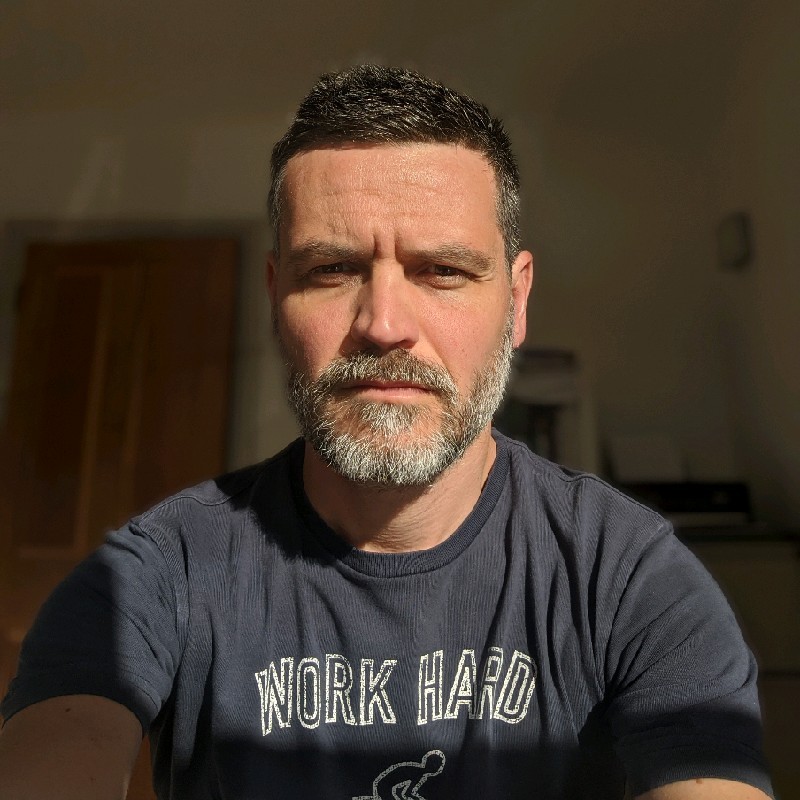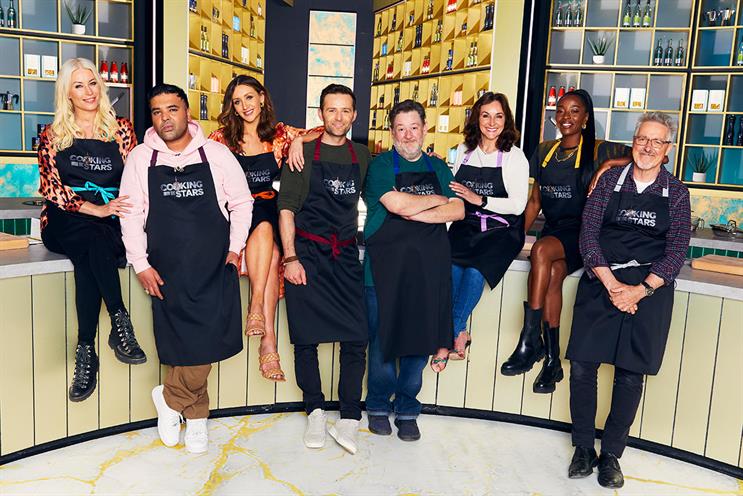M&S Food made headlines last year when it exited its relationship with Grey and brought its advertising in-house. At our one-day summit, we spoke to Head of Brand Communications Robbie Black about the decision, how his department is set up, managing cultural change and proving its value to the business

Robbie Black, Head of Brand Communications, M&S Food
IHALC: Can you talk to us about the impetus behind M&S Food taking its advertising in-house last year?
RB: I joined M&S about three and a half years ago. Up until that point I’d only ever worked in advertising agencies. When I made the move across it was in more of a traditional client role. We were working with Grey and we had a very traditional retained creative agency relationship. Really, that was just for the above-the-line work, though, because what had been happening in the years leading up to that was that we’d actually been building up a lot of our own internal resources as well. So for instance, in my team now, I’ve got CRM, where I have a team of HTML developers and designers, and we handle absolutely everything ourselves on that side. And by that point, we were handling all of the photography ourselves too. So a lot was already happening in-house.
The really big turning point for us was the Fresh Market Update campaign, which we’ve done for the last three years. It’s a campaign which came about with three weeks notice. We had planned a lot of activity for the summer but my boss, Sharry Cramond – she is honestly one of the most inspirational and demanding people that I’ve ever met in my entire life – she came into work one morning, and she said, ‘you know, that campaign that we’ve got planned? Well, I don’t want to do any of that. I want to be on television in three weeks’ time. And I don’t just want to be on television with one ad, I want to create a whole different series of ads, where we talk about all of the amazing products and all of the amazing suppliers that we work with’.
So that was the challenge. The only way that we could do it was working directly with a media owner, in this case with ITV, and approaching it not as a traditional advertising shoot, but actually as programming. So we ended up producing six weeks’ worth of content – 24 individual 60-second ads that went out over that period. It was massively successful and we then repeated it last year, on a slightly bigger scale. In total we produced 73 individual 60 second ads over the summer in collaboration with ITV.
I think that really made us realise that the way that we want to work moving forward is exactly that:It’s to partner with the very, very best people in the industry, whoever they are. Sometimes that is going to be a media owner or broadcaster, sometimes that is going to be an agency as well. Sometimes it’s going to be directly with a production company too. But I think that was a real penny-drop moment about how the traditional agency model might get in the way of us working in the way that we wanted to work. So this opens up a wide variety of options for you. It set us on the path to thinking about the structure that we would need internally and the people in the roles that we would need internally to do that. A year ago we exited our relationship with Grey and I brought in a few key people to help me create all our advertising in-house.
IHALC: What were the roles that you needed to add when you made that change?
RB: Obviously, creative. We were lucky enough to have worked with a brilliant creative director at Grey beforehand [Rich Robinson], so it was a very easy conversation – he knew us, he knew how we worked. He’s unbelievably collaborative as well. And I think he’s learned a massive amount – he’s been exposed to all sorts of conversations that he wouldn’t normally be exposed to at an agency, for both good and bad. We don’t have a permanent creative resource other than Rich. Instead, we’ve got a number of different teams who we work with on a freelance basis who we’ve built up relationships with over the past 20 years, who we know that we can rely on. That was one of the decisions that we made up front – we didn’t want to have a permanent in-house advertising creative team because we want to partner with the very best people in the industry, whoever they are.
Another key one was production, bringing in an amazing producer as well. We’ve been really fortunate with that. So those were really the two key roles. Normally, you would talk about strategy within that as well. I think we’re lucky that we’ve got an amazing strategic capability within M&S already, where we can lean on their expertise where we need to.
IHALC: And you purposely don’t describe yourselves as an in-house agency?
RB: One of the things that I’ve been quite clear about internally is we don’t refer to ourselves as an agency. It can be absolutely right for some companies, but it’s probably not right for us at this moment in time. I’m not ruling it out in the future but for us, it’s much more about that deep collaboration with the business and then picking and choosing the very best partners for us to work with.
IHALC: You are integrated with the marketing department, you don’t sit in a separate space and you don’t brand yourselves separately – what did you feel that would give you that you wouldn’t have got if you’ve gone the full-on IHA route?
RB: It’s about parity. I want to look around the rest of the marketing leadership team and feel as though they are my colleagues, rather than my clients. I think that’s how we are going to get the best work out. I also didn’t want to replicate the traditional client agency relationship internally, I didn’t want there to be conversations about cross-charging or timesheets that were just going to get in the way of us producing the very best work that we could.
IHALC: So without that agency structure, how do you deal with work requests, prioritisation and avoid being overwhelmed?
RB: A lot of my role is actually helping my team to prioritise what’s important and what’s not. Our structure does allow us to have those conversations to say, yes, of course, we can do that, which of these things would you like us to prioritise? We work in a very nimble and agile and flexible way.

IHALC: And what’s the process when it comes to briefing, which is always another thorny issue?
RB: I think one of the things that our structure does allow us to do is to have an enormous amount of say in the future direction of the company. So if you look at everything we’ve done in the last three years within foods, much of it has been led by marketing, and much of it has been led by Sharry, and by her leadership team as well. So if I look at Cooking with the Stars [above], which is the advertiser-funded programme that we have at the moment, or Fresh Market Update, which is actually our biggest campaign in terms of spend last year, those have been initiatives that have been driven by marketing, by my team with Sharry, into the business as opposed to the other way around. We don’t sit there and wait for a brief to come in from the business.
IHALC: Something else we talk a lot about with in-house agencies is building up trust and credibility internally: what are your techniques for doing that?
RB: A key thing for us has been the development of our own econometric models. So we have a full-time econometrician who gives us robust results to be able to talk about with the food leadership team. He has built a series of 13 separate models so we can tell the impact that any given campaign or any given media channel has had on both revenue and profit. That model will take into account all of the external influences that you can think of – like the weather. If it rains too much, people don’t shop with us because we tend to have stores which don’t have car parks near to them. It’s essentially a really complicated mathematical model which allows me to say that for every pound that we invest in marketing, then we produce a revenue return of around ten pounds, I think it was for the last financial year.
IHALC: And I guess that gives you a huge advantage when you’re talking to parts of the business that maybe don’t always understand marketing or are much more results and numbers driven?
RB: Absolutely. When it comes to all of the budget conversations for the next financial year, if you can say, ‘Oh, yes, you can cut the marketing budget by 5 million pounds, but actually, that’s going to be 50 million pounds revenue that you’re not going to see. So are you happy to take that off the forecast as well?’ It’s a completely different conversation.
IHALC: How do you review work and its effectiveness?
RB: Our year is split into phases. Every single phase, we’ll review all the activity that’s happened across that. We’ll talk about what’s worked and what hasn’t worked. I’ve never worked in an organisation before that has such a focus on those post-implementation reviews. At Christmas, for example, I think it was the fourth of January when we did the post implementation review for Christmas. Talking about it when it’s really fresh, when those scars are still open wounds at that point, actually is really important. It’s really valuable. Because a lot of it you kind of forget over time as well. So I think if we were to do it two months later, you would you lose a lot of the richness. Once we get the econometric results, there’s always sort of five, six month lag for that as well, then we’ll go into it in more detail. And then we’ll feed that into the media planning for the next year. It’s quite relentless in terms of that calendar of events, the approach that we take to it. Three and a half years ago, I didn’t have any grey hair.
We’re all rushing to keep up with Sharry to be totally honest, the speed at which she moves is absolutely amazing. In an organisation that does not move at speed, as well. So I think if we didn’t have someone in that leadership position, who was incredibly good at making decisions, and fearless when it came to making those decisions, and actually very, very kind of good and clear with the rest of the business about what we were doing and why we were doing it, we would really, really struggle.
Last night, we were at the concert for Ukraine, which ITV put on and Marks and Spencer were headline sponsor for. That was an idea that came about, I think, about a week and a half ago. And it’s brilliant, because it’s a marker of how much our organisation has changed. There’s no way that ITV would have even come to us with that three and a half years ago, because they would have known that there’s no way that we would have been able to say, ‘Yeah, we’re in’ and move at that kind of speed as well.
But the downside, of course, is that within a week and a half, we had to produce a whole series of idents to go with it and everything else to go around the sponsorship. The more we succeed, the more we manage to pull it off every single time, then the more is expected of the team as well. And so far, touch wood, we haven’t had any crushing failures, but we will at some point, we absolutely will. Hopefully, we’ll have built up enough trust and respect internally for that to be okay.
There’s been quite a big cultural change within M&S in the last in the last three and a half years. It’s starting to become a little bit more socially acceptable to fail, because it’s better to try something and to have failed than not to have tried something at all. But we’re definitely on a journey. I don’t want to give anybody the impression that failure is celebrated by any stretch of the imagination internally, it’s not. It’s more that we are just very, very honest and hard on ourselves and with each other about what has worked and what hasn’t worked. I think being honest about that really helps those conversations. The second that you start to get defensive over it and defensive over your failures as opposed to owning them, that’s when you’re in a really difficult position.
